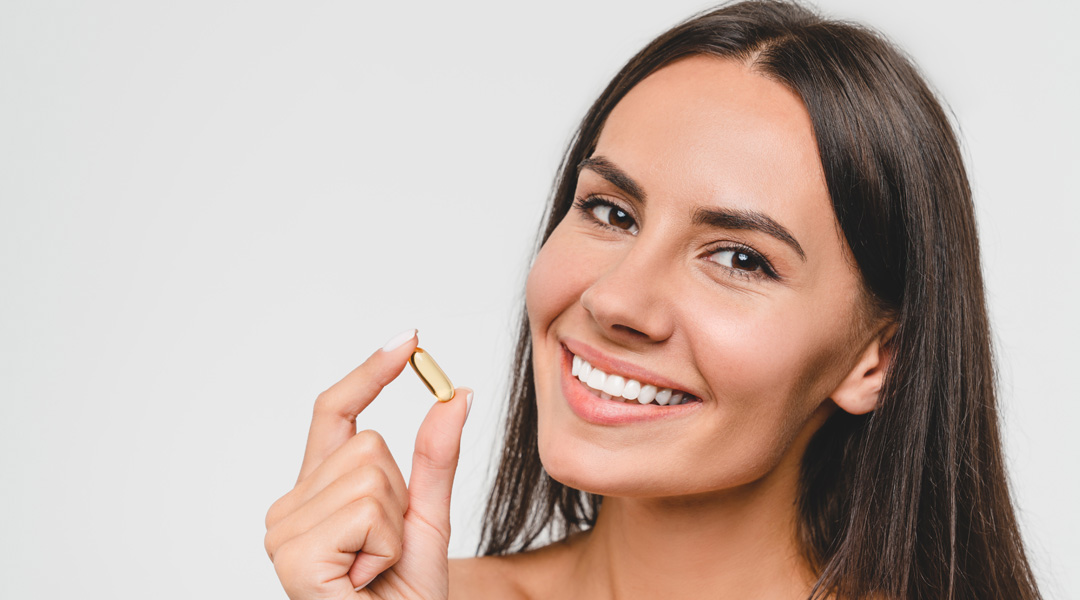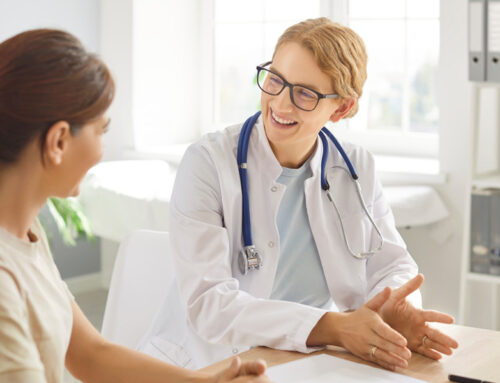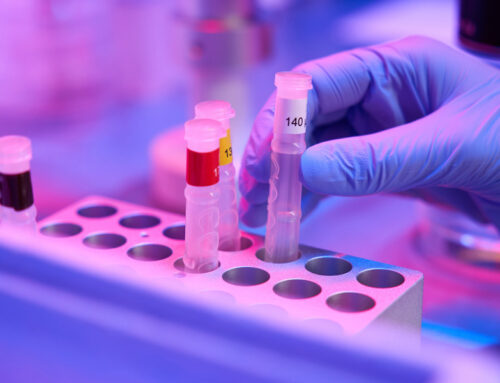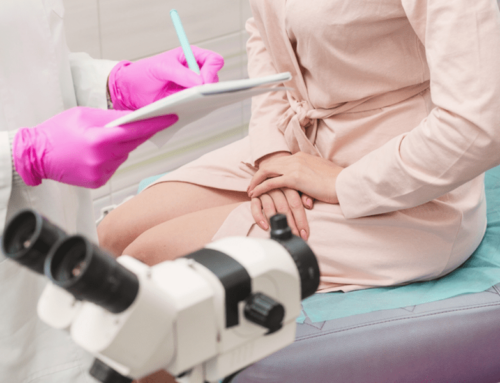Antibiotics are a powerful tool in modern medicine, capable of eliminating stubborn bacterial infections and saving lives. But as many women know all too well, sometimes the relief they bring can come with an unexpected and uncomfortable side effect: thrush. Whether you’re currently on antibiotics or have experienced a yeast infection in the past, you may find yourself asking, “Can antibiotics cause thrush?”
At Trogolo Obstetrics and Gynecology, we often speak with patients who are confused or frustrated by this connection. You’ve taken your medication exactly as prescribed, you’re feeling better… and then suddenly you’re dealing with itching, discharge, and discomfort. What’s going on?
As a trusted gynecology specialist in Jacksonville, Florida, we want you to feel informed and empowered about your health. In this article, we’ll break down why thrush after antibiotics is so common, how it happens, what to do about it, and most importantly, how to prevent it from happening again.
What Is Thrush?
Let’s start with the basics. Vaginal thrush is a common fungal infection caused by the overgrowth of Candida, a type of yeast that normally lives in small amounts in the vagina. When something disrupts the balance of bacteria and yeast in your vaginal microbiome, Candida can multiply quickly, leading to an infection.
Symptoms of vaginal thrush include:
- Itching or burning in the vaginal area
- Thick, white discharge that resembles cottage cheese
- Redness and swelling around the vulva
- Pain during sex or urination
While these symptoms can be very uncomfortable, thrush is usually treatable with antifungal medications. The bigger question for many women is why it happens, especially after taking antibiotics.
Can Antibiotics Cause Thrush?
The short answer? Yes. If you’re wondering, “Can antibiotics cause thrush?”, the answer is not only yes, but this is one of the most common side effects of antibiotic use in women.
Here’s why it happens: antibiotics are designed to kill bacteria, but they don’t discriminate between good bacteria and bad bacteria. Your vaginal microbiome is full of healthy bacteria, especially lactobacilli, that help keep yeast in check. When antibiotics kill off those protective bacteria, yeast can overgrow and cause an infection.
This explains why many women notice thrush after antibiotics, especially broad-spectrum antibiotics like amoxicillin, cephalexin, or clindamycin. The longer or stronger the antibiotic course, the higher the likelihood that Candida will seize the opportunity to take over.
The Connection Between Antibiotics and Thrush
To understand the relationship between antibiotics and thrush, it helps to think of your vaginal microbiome as a garden. When the garden is healthy, the “good” bacteria act like ground cover, crowding out weeds and maintaining balance. But when antibiotics come in and clear out those protective bacteria, it’s like pulling up all the ground cover. Suddenly, there’s space for weeds (in this case, yeast) to grow wild.
Some factors that increase the risk of yeast infection from antibiotics include:
- Prolonged or repeated courses of antibiotics
- Broad-spectrum antibiotics that kill a wide range of bacteria
- A naturally low level of protective bacteria
- Underlying health conditions like diabetes
- High estrogen levels from birth control pills or pregnancy
If you’ve ever dealt with thrush after antibiotics, you know just how disruptive it can be. And while it may feel frustrating, you’re not alone. It happens to millions of women every year.
Can You Treat a Yeast Infection While on Antibiotics?
Many patients ask, “Can you treat a yeast infection while on antibiotics?” The answer is yes, you absolutely can, and in many cases, you should.
If you’re already experiencing symptoms of a yeast infection while taking antibiotics, you don’t need to wait until you finish the antibiotic course to start treatment. In fact, treating the yeast infection promptly can relieve your discomfort and prevent symptoms from worsening.
Treatment options include:
- Over-the-counter antifungal creams or suppositories (e.g., clotrimazole, miconazole)
- Prescription oral antifungal medications (e.g., fluconazole)
- Combination therapy for more stubborn cases (oral + topical)
If you’re unsure which treatment is right for you, or if you’ve had recurring infections, it’s wise to consult with your provider. A gynecology specialist in Jacksonville, Florida can help ensure you’re on the right course.
How to Prevent a Yeast Infection from Antibiotics
If you’ve ever had a yeast infection from antibiotics, you probably want to avoid repeating the experience. Fortunately, there are proactive steps you can take to reduce your risk. While prevention isn’t always foolproof, these strategies can help maintain a healthy vaginal microbiome during and after antibiotic use:
1. Take a Probiotic
Probiotics containing Lactobacillus can help replenish the good bacteria in your gut and vagina. Look for strains specifically designed for women’s health. You can take probiotics during and after antibiotic therapy, but be sure to space them a few hours apart from your antibiotics for best absorption.
2. Eat Yogurt with Live Cultures
Plain, unsweetened yogurt is a natural source of beneficial bacteria. Adding it to your diet may offer some support in preventing thrush after antibiotics.
3. Avoid Douching and Harsh Soaps
These products can disrupt the natural pH of the vagina and further upset the balance of bacteria and yeast. Stick with water and mild soap for external cleansing only.
4. Wear Breathable, Cotton Underwear
Tight, non-breathable fabrics create a moist environment that yeast loves. Choose cotton and avoid lingering in sweaty workout clothes.
5. Discuss Preventive Antifungals with Your Doctor
In some cases, your provider may recommend taking an antifungal at the same time as your antibiotics—especially if you have a history of recurrent yeast infections from antibiotics.

Who Is Most at Risk for Thrush After Antibiotics?
Not every woman who takes antibiotics will develop a yeast infection. However, you may be more vulnerable if you:
- Have frequent or long-term antibiotic use
- Have a weakened immune system
- Are pregnant
- Take high-estrogen birth control pills
- Have diabetes or uncontrolled blood sugar
- Are already prone to vaginal infections
Understanding your personal risk factors can help you and your provider create a plan to reduce your likelihood of developing thrush after antibiotics.
Antibiotics and Thrush: When to Call Your Provider
While mild yeast infections can often be treated at home, it’s important to know when to seek professional care. If you’re dealing with antibiotics and thrush and experience the following, it’s time to call your doctor:
- Severe or persistent symptoms
- Recurrent infections (more than 4 in a year)
- Uncertain if your symptoms are due to thrush or something else
- Symptoms that don’t improve with over-the-counter treatment
- You’re pregnant or breastfeeding
In some cases, what seems like a yeast infection may actually be something else, such as bacterial vaginosis, STIs, or allergic reactions. A gynecology specialist in Jacksonville, Florida can accurately diagnose your condition and recommend the right treatment.
Can You Use Preventive Treatments Proactively?
Another common question we hear is whether it’s okay to take antifungals preventively when starting antibiotics. If you’re someone who always seems to get a yeast infection from antibiotics, your provider may recommend:
- Taking a single-dose fluconazole on day 1 or 2 of your antibiotic
- Using an antifungal suppository during the final days of your antibiotic course
- Incorporating vaginal probiotic suppositories for balance support
These proactive steps can help avoid the development of thrush after antibiotics, especially if you’ve dealt with multiple infections in the past.
The Emotional Toll of Recurring Thrush
While the physical symptoms of thrush are frustrating enough, repeated infections can take a real emotional toll. Many women feel embarrassed, discouraged, or ashamed about recurring vaginal infections, even though they’re extremely common.
Please know this: if you’re struggling with repeated yeast infections from antibiotics, you’re not alone, and it’s not your fault. Vaginal microbiomes are incredibly sensitive, and even small disruptions can trigger infections in some women.
At Trogolo Obstetrics and Gynecology, we create judgment-free spaces to help women address these issues without shame. If needed, we can refer you to specialists for recurrent vulvovaginal candidiasis and offer a long-term management plan.
Frequently Asked Questions
Can antibiotics cause thrush even if you take probiotics?
Yes, they can. Although probiotics may lower the risk, they aren’t guaranteed protection. Each woman’s body reacts differently to antibiotics.
How long after finishing antibiotics can you get thrush?
Thrush after antibiotics can develop during treatment or several days afterward. Keep an eye on symptoms for up to a week post-treatment.
Can you treat a yeast infection while on antibiotics?
Yes! In fact, you should if symptoms start mid-treatment. Antifungal medications won’t interfere with antibiotics.
Can men get thrush from antibiotics too?
Yes, although it’s less common. Men can experience oral or genital thrush due to disrupted microbiota after antibiotics.
Final Thoughts
So, can antibiotics cause thrush? Without a doubt, they can, and for many women, they do. Understanding how and why this happens is the first step toward prevention and relief. From protective probiotics to timely antifungal treatment, there are many ways to reduce your risk and take control of your vaginal health.
At Trogolo Obstetrics and Gynecology, we’re here to listen, educate, and support you, whether it’s your first infection or your fifth. We take antibiotics and thrush seriously and work with each patient to ensure you feel better quickly and prevent future discomfort.
If you’re dealing with thrush after antibiotics, curious about preventive options, or experiencing recurring infections, don’t hesitate to request an appointment with our care team. Together, we’ll find the right path to healing and balance.





